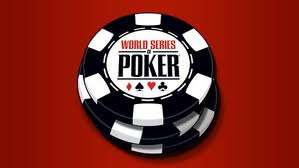Has the November Nine Worked for the WSOP Main Event?
The 2015 World Series of Poker (WSOP) Main Event is in full swing at the Rio in Las Vegas as more than 6,000 hopefuls have decided to risk $10,000 on the off chance that it might turn into hundreds of thousands or even millions of dollars. The nine members of the final table will be determined Tuesday night, at which point the tournament will be paused and those skilled and fortunate few will be brought back to Las Vegas in November to conclude the event. As we all know, those players are dubbed the “November Nine.”
We are used to the concept of the November Nine at this point, but this will only be the eighth year in which this tournament format has been used. It feels like this is the way it will be from here until eternity, but should it be?
Prior to 2008, the WSOP Main Event was structured just like any other tournament with the final table being contested the day after its membership was determined. Play down to nine one day, play down to the winner the next. But things were changed up in 2008 when the WSOP announced the innovative and controversial decision to move the final table to November. The big reason for the radical restructuring was television ratings. Before the November Nine, the winner of the Main Event was known months before the tournament was broadcast on ESPN. For most poker fans, it was completely anti-climactic. Only the viewers at the odd intersection of too casual of a fan to read about poker online and big enough of a fan to watch the WSOP on television both watched and didn’t already have the ending spoiled.
By moving the final table to November, ESPN could broadcast episodes in the weeks and months leading up to the November Nine and then smoothly go right into the live final table broadcast (or semi-live, as it were). Now casual fans and diehards alike will be interested to watch, as they have no way of knowing who wins. Additionally, ESPN and the WSOP saw the layoff as an opportunity to market the tournament and build storylines for each player. After all, viewers will care to watch a player for whom they have a rooting interest (developed through human interest pieces during the hiatus) much more than they would just some random schmo sitting at a table.

The 2014 WSOP November Nine
Another reason for shifting the final table to November was to allow players to have time to capitalize on their new-found celebrity, particularly when it comes to endorsements. With the rise of internet poker, online poker rooms scrambled to pay players to slap their patches on their clothing for display at the final table. It could be a lucrative prospect for players, a nice bonus on top of the gobs of money they had already clinched. Before 2008, the process was a complete mess. The night the final table members were determined, the poker room reps would descend on the players, trying to cut deals. The players were already exhausted from a long day and had to rest up for the final table, but they were being pulled left and right. I remember covering the WSOP live in 2006 and watching players who had reached the final three tables trying to quickly ink deals with online poker rooms during breaks in the action. On interaction that remember witnessing, in particular, had a player on a 20-minute break trying to talk to his agent and evaluate two different offers all while trying to bolt back to his hotel room to grab a faxed contract.
Holding the final table in November also has the added benefit of giving the friends and family of the players a chance to make travel plans, rather than flying to Las Vegas on one night’s notice.
So we have some reasons for the change, but has that change been effective? It certainly was initially, as the 46 percent more people watched the 2008 final table on ESPN than watched the 2007 final table. It received a Nielsen rating of 1.9 and 2.4 million viewers, very solid for such a specialty program. The ratings have been on a downward trend, though. The final night of the 2014 final table drew 1.15 million viewers for a 0.4 rating, a 6.1 percent decrease from 2013.
Has the time for the November Nine come and gone? Possibly. The decrease in ratings likely isn’t the fault of the November Nine concept, but rather an overall decrease in poker’s popularity in the United States. Without widespread online poker in the States anymore, the sport’s fanbase has decreased. Additionally, even though seven years a relatively short period of time, home entertainment has come a long way since 2008. There are many more television and internet streaming options nowadays; there is increased competition for eyeballs.
But the whole marketing part of the equation really hasn’t amounted to anything. In 2008, it sounded like the WSOP and ESPN had fantasies of really promoting the hell out of the final table and the players in the months leading up to the tournament finale. That never happened. The only time ESPN viewers ever hear about the WSOP is on the days the Series is broadcast, when the network shows the occasional commercial or the host of a morning show gives a quick teaser. No human interest pieces are developed, no poker is presented except for the episodes of the WSOP on ESPN leading up to the November Nine.
And while endorsement deals certainly got easier, it’s not like the November Niners are drowning in promotional cash. You still basically see the same online poker patches you saw before; the players just have more time to work on the deals.
Some players also object to the November Nine because it conceivably helps the weaker players at the final table, as they now have four months to study up and prepare for their opponents. It is naturally more fun to play the tournament through to the end right away, as well.
It sounds like I want the November Nine to be trashed, then. No, not necessarily. In my opinion, the move to November made the Main Event infinitely more watchable. No longer do we have to stay away from poker news for four months, or even sports news for a couple days, in fear of hearing who won the Main Event. It flows so much better now. I am not personally all that interested any more in watching the episodes leading up to the final table, but many people are, and having them build into the live final table is great.
Having the ability to watch the complete final table live (or with a short delay) is a mixed bag. Though I love poker, an 8-10 hour final table is usually horribly boring to watch. Most casual fans won’t have the patience for it (hell, I write about the tournament the next day and I sometimes can’t stay up late enough to watch the whole thing). But overall, getting to watch the entire final table as it happens is much better than the old option of seeing a highly edited version of it months after the fact. I do think there is a place for a condensed, all-in fest episode, but the live option is better.
I’m not in love with the November Nine concept, but I appreciate what it brings to the table (no pun intended). I’m sure not all November Niners love having to wait to finish the tournament, but in the end, I doubt they complain too much, considering they are doing it for a lot of money. I wouldn’t be heart-broken if the Main Event reverted back to its old format, but making it more enjoyable to follow and watch is a huge benefit, so I feel it should be kept as-is.

















COMMENTS